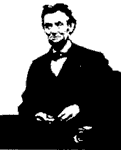阅读材料,完成下列各题。
材料一
臣愿陛下兴太学,置明师,以养天下之士,数考问以尽其材,则英俊宜可得矣。今之郡守、县令,民之师帅,所使承流而宣化也;故师帅不贤,则主德不宣,恩泽不流。
——《汉书·董仲舒传》
材料二
“天赋最优良的、精力最旺盛的、最可能有所成就的人,如果经过教育而学会了他们应当怎样做人的话,就能成为最优良最有用的人。如果没有受过教育而不学无术的话,那他们就会成为最不好、最有害的人。”
——苏格拉底
材料三
“通才教育是一种符合于自由人的价值的、使受教育者获得德行与智慧的、能唤起和发展那些使人趋于高贵的身心与最高才能的教育”
——意大利弗吉里奥(1349—1420)
材料四
各科教科书,务合乎共和民国宗旨,凡民间通行之教科书,其中如有尊崇满洲朝廷及旧时管制、军制等课,并避讳抬头字样,应由各该书局自行修改。……小学读经课一律废止。……中学校以完足普通教育,造成健全国民为宗旨。科目有修身、国文、外国语、历史、地理、数学、博物、物理、化学、法制经济、图画、手工、乐歌、体操。
——南京临时政府《普通教育暂行办法》
请回答:
材料二反映了苏格拉底怎样的教育思想?这种思想与材料一中反映的教育思想有何区别?
参考答案:
教育可以让人认识自己的美德苏格拉底的教育观是为了实现人的自我价值,材料一的思想是为统治者服务。
解析:依据材料中“如果经过教育而学会了他们应当怎样做人的话,就能成为最优良最有用的人。”,可以看出苏格拉底认为教育可以让人认识自己的美德。第二小问可以结合教育的目的进行分析,苏格拉底的教育观是为了实现个人的自我价值,服务于社会;材料一的教育思想是为维护统治者的政治统治而服务。

